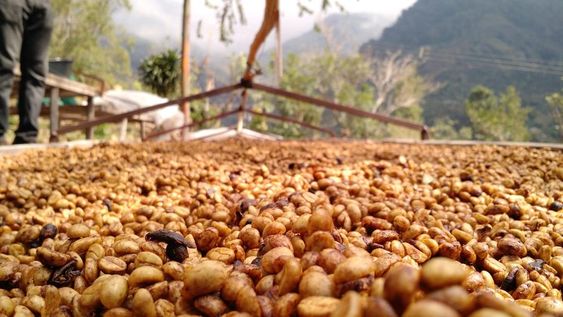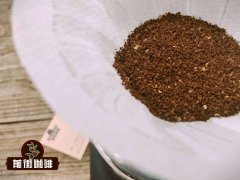Yega Shirley Felix Coffee Bean processing Plant featuring Red Cherry Project Coffee beans
Features of the Riko Coffee Bean Processing Plant
Lico's processing plant is located in the town of Kocher, within the Yegashefi region, and as such, produces coffee with attractive floral notes. The name Reko comes from a steep mountain on the Kocher Hills. Reko means challenge in the original meaning of Ethiopia. It brings out the meaning that it is not easy to climb Reko Mountain. It is also such a challenge that shows that it is not easy to get good coffee in the Yegashfi region.
The coffee harvest here falls between the end of October and the middle of January, and at this time of year the Riko plant gathers coffee cherries from nearby farmers. About 850 farmers bring their freshly harvested ripe red cherries here. Common transportation includes bicycles, donkeys and "omnipotent feet."
The varieties are mainly local Kurume and native species (Heirloom). After the cherries arrive at the processing plant, processing and post-processing are not easy, but the atmosphere in the processing plant is like a celebration. Farmers sing folk songs in Afaan Oromoa, and their hands keep sorting cherries. Songs and laughter echo in the valley.
Like many excellent coffees, Ricoeur's coffee is won by attention to detail. The team knows that coffee farmers can only produce the best coffee by knowing the information about ripe coffee cherries, so they provide training channels for their partners before harvesting.
In addition, since the fruits of nearby small farmers are collected, in addition to the actual selection of full-ripe red cherries, coffee cherries in the process are also classified according to harvest time and region.
The processing plant has a number of professional coffee managers stationed, using their strong expertise and accumulated experience over a long period of time, control all aspects of the processing process, so that the coffee beans from the origin of the processing plant to the consumer country can make the expected results.

Project Red Cherry
Since 2007, Operation Cherry Red Project has been initiated by Trabocca and local farmers to manually harvest 100% mature red coffee cherries at the beginning of the harvest season according to microclimate zones, which means that each coffee seed is mature and rich in nutrients.
Leeko Co-op uses refined shelving techniques to enable green bean producers and consumers to buy high-quality coffee beans, which are rewarded to farmers in return, making farmers more willing to work on quality improvement.
Ethiopian Red Cherry Program Sunlight Yegalico Treatment Plant G1
(Yirgacheffe Kochere Reko Washing Station G1)
■ Country: Ethiopia
■ Production area: Yirgacheffe
Kochere Woreda
■ Treatment plant: Reko Washing Station
■ Grade: G1
■ Treatment: Sunlight
■ Altitude: 1850-2100 m
■ Flavor description: citrus sweet, green apple, strawberry sweet and sour taste, fruit juice taste delicate fruit acid, light floral finish after the sweet honey flavor.
Important Notice :
前街咖啡 FrontStreet Coffee has moved to new addredd:
FrontStreet Coffee Address: 315,Donghua East Road,GuangZhou
Tel:020 38364473
- Prev

Characteristics of coffee producing area in Muraya town of Kenya coffee bean flavor characteristics of Gittika processing plant
Mulaya town, which belongs to the central province of Kenya, is located at 1350-1950 meters above sea level. The environment and climate suitable for coffee production and fertile volcanic soil (clay Nitisol) give birth to about 100, 000 small coffee farmers. Among them, the Gittika processing plant is a processing plant in the Kanyenya-ini cooperative system, about 1700 meters above sea level. It can be harvested from April to September every year.
- Next

Japanese coffee history, culture and customs the world's first coffee chain, Old S ã o Paulo Cafe
History of coffee in Japan: the time when coffee spread to Japan was presumed to be 1641, that is, during the Yuanlu period in the middle of the Edo period in Japan, it was brought to Japan by the Dutch store on the island of Nagasaki. At that time, Japan implemented a strict policy of locking up the country and most of the people who could come into contact with foreigners were servants (officials), merchant interpreters (translators) and tourist girls (geisha). Until the Japanese period of Zunberu in 1776.
Related
- Beginners will see the "Coffee pull flower" guide!
- What is the difference between ice blog purified milk and ordinary milk coffee?
- Why is the Philippines the largest producer of crops in Liberia?
- For coffee extraction, should the fine powder be retained?
- How does extracted espresso fill pressed powder? How much strength does it take to press the powder?
- How to make jasmine cold extract coffee? Is the jasmine + latte good?
- Will this little toy really make the coffee taste better? How does Lily Drip affect coffee extraction?
- Will the action of slapping the filter cup also affect coffee extraction?
- What's the difference between powder-to-water ratio and powder-to-liquid ratio?
- What is the Ethiopian local species? What does it have to do with Heirloom native species?

